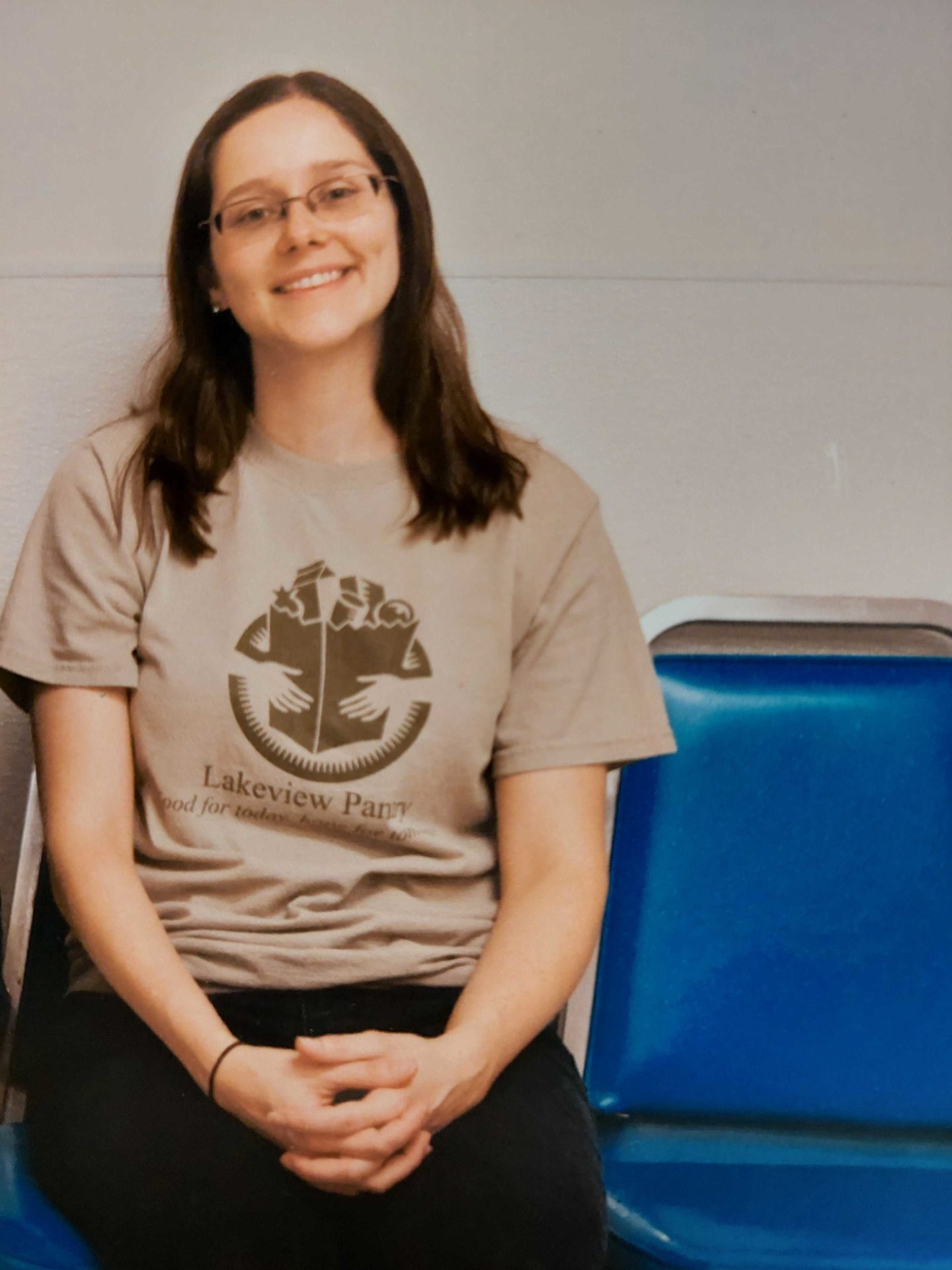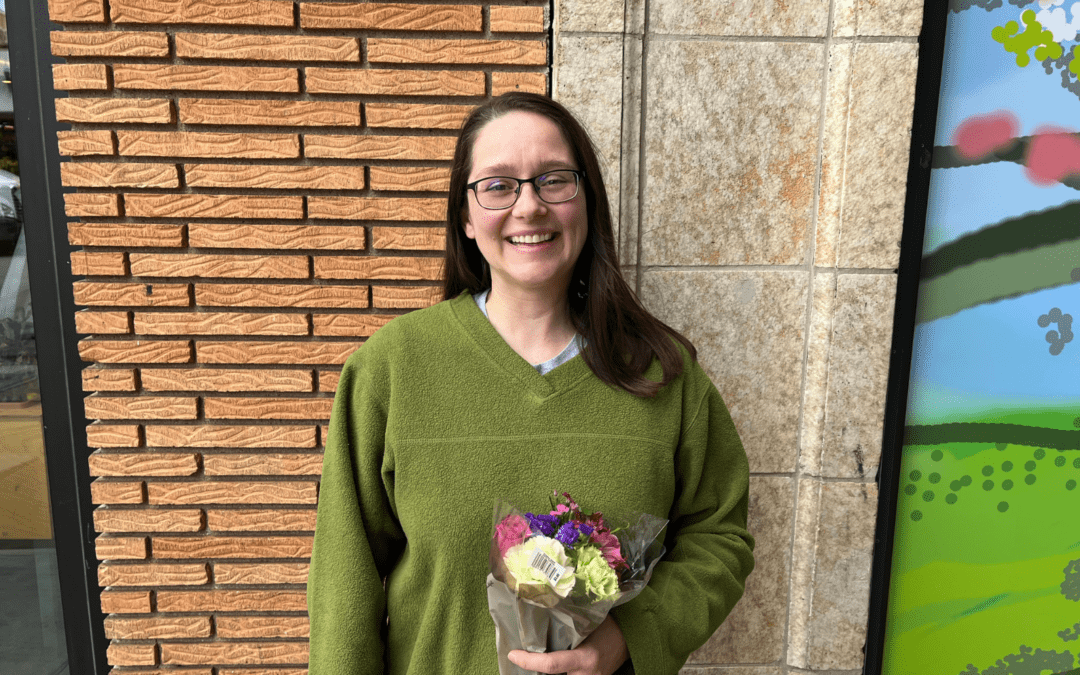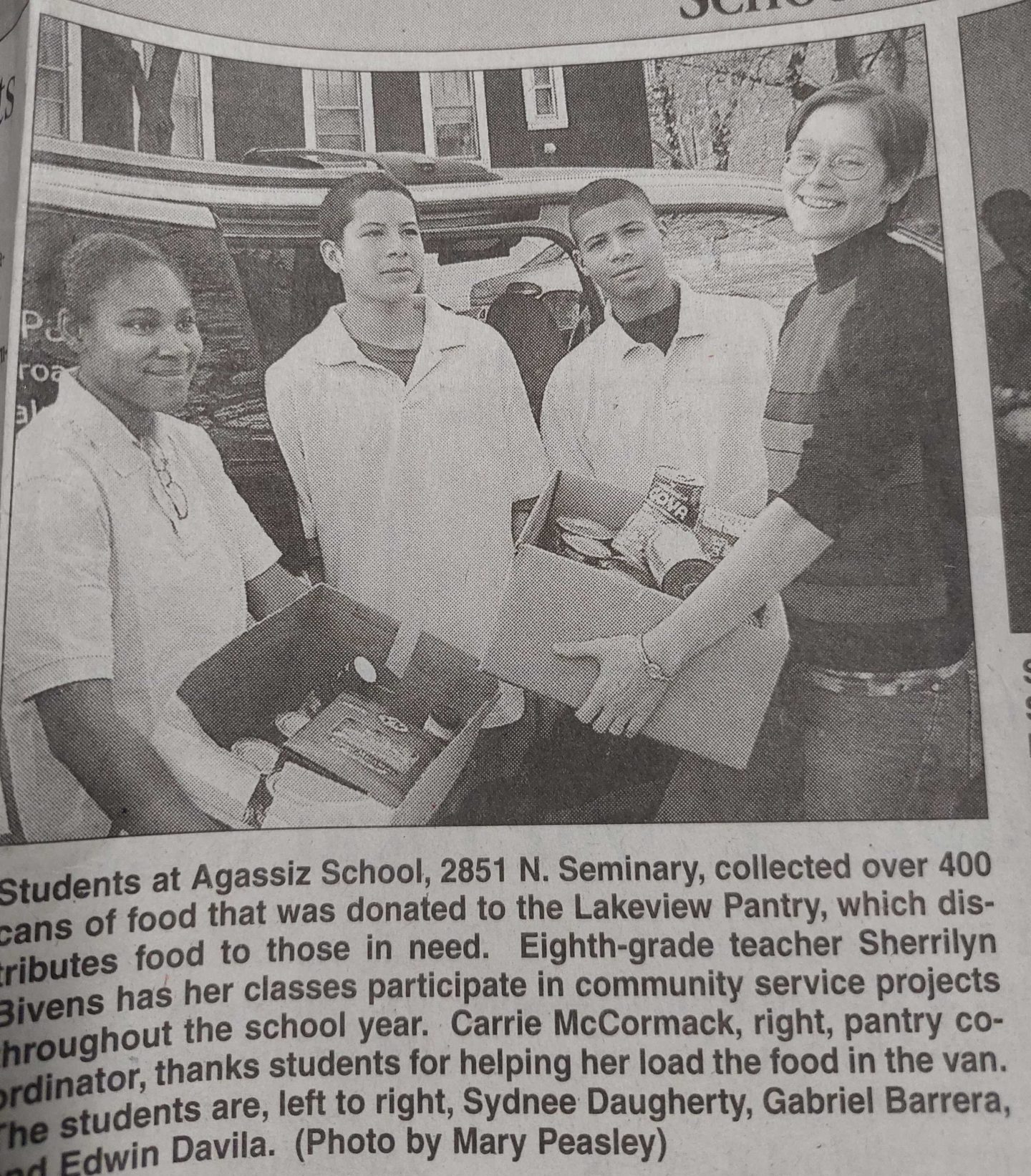For 20 years, Carrie McCormack has been a kind and steady presence at Nourishing Hope, formerly known as Lakeview Pantry.
She recently celebrated her 20th work anniversary — an increasingly rare milestone in today’s job market. Looking back on her tenure, McCormack noted that the people she’s met along the way have made all the difference.
“It’s a very special place,” said McCormack, senior coordinator of client experience for Nourishing Hope. “And the people make the party. That’s what I always try to express to people when they first get here. How do we want to do this? How are we going to? We are the pantry — the staff, the volunteers, the community members are all who make the pantry so special.”
McCormack comes to this work as someone who has lived experience with food insecurity. Growing up in the town of Athens, Ohio, her family lived in low-income housing and didn’t own a car or even a telephone, McCormack said. She knows what it’s like to receive services — and how important it is to treat people with dignity in those interactions.
“Carrie embodies Nourishing Hope’s values of dignity and respect,” said Chief Program Officer Jennie Hull. “She carries our mission in her heart and brings warmth wherever she goes. So many folks’ first impression of the pantry has been through their interaction with Carrie, whether it be a neighbor coming for services, a new volunteer, or even a new staff member.”
After graduating as a first generation college student from Berea College in Berea, Kentucky, with a bachelor’s degree in psychology, McCormack’s life changed quickly: She got married, moved to Chicago and began working for Lakeview Pantry, where she’s remained ever since. Today, she lives in Skokie with her husband and two daughters.
Recently, McCormack took the time to reflect on her milestone and what it means to her. The following transcript has been edited for length and clarity.
Q. What was it like for you having those first interactions with people at what was then Lakeview Pantry 20 years ago?
A. When I was a child, we needed to utilize services similar to the pantry. I remember that when folks were giving out the food how much I appreciated it when they spoke to me as a person and didn’t show pity. So I was so excited to have the opportunity to make the pantry a comfortable, welcoming space. And so it felt really nice to contribute to someone having a nice day and having a positive interaction even though they were in a situation of needing a little support.
For me it was important to have what we now call trauma-informed care. The pantry has always had a real emphasis on client choice and client experience.
Twenty years ago, we didn’t really know what that was called at the time. But part of it is recognizing that the individual receiving the service — we’re serving them. So we should be doing what they need and we should have a better understanding of what it feels like on the receiving end. And so I’ve always really appreciated that we’re trying to do what the community needs.

Carrie McCormack has seen Nourishing Hope/Lakeview Pantry go through many changes in 20 years, but the mission has remained constant.
Q. It’s clear that how you grew up both informs and inspires how and why you do this work.
A. Absolutely. I am compelled to provide an experience either that I have experienced or wanted to experience when receiving that support. I am driven by the fact that this work is so important.
Q. What’s changed in the last 20 years and what’s stayed the same?
A. Let’s start with technology. I inherited a file card system to track our client visits. So a lot of our calculations were done by hand with a calculator and later Excel. Technology is the big one. (Editor’s note: Today, Nourishing Hope uses Salesforce, a cloud-based technology platform to track food and client data to inform and improve service delivery.)
In terms of what’s stayed the same, the need is great. Obviously hunger is a symptom of how other things are going. If someone was a waitress and they broke their arm and they weren’t able to work and got behind on bills, they might need help with food. One thing that hasn’t changed is that usually by the time someone is coming for food, other things have happened to precipitate their need for us.
Q. How has the need changed? Are we serving different types of people than we were from 20 years ago?
A. It’s been fascinating. As the demographics of Chicago have changed, so too have the demographics of who we serve. As there are world crises, we’ll see those effects later on. We’ve seen the median age of our clients age as there are larger pockets of the population that are also aging. We’ve seen changes geographically in where people are living based on affordable housing or even SROs (single resident occupancy) — there used to be more of those. It’s definitely been interesting to see so many things shift over the years.
Q. What are you most proud of in the past 20 years?
A. I have a couple. Chicago does a tremendous job in the response when there’s a major winter storm. I’ve always been impressed by the fact that if there’s snow overnight it will be cleared in time for the commuter traffic. We had a couple occasions when it snowed just a few hours before distributions so there wasn’t time for that response. I remember a time, for example, when home delivery drivers all gave themselves extra time and they all showed up for the shift because they were all so compelled to make sure those deliveries got to our seniors. They knew the seniors didn’t have any other way to get to our food. Those clients really needed and expected that food. I was just really moved by the fact that so many community members were dedicated to providing that service.
One of the things I tell the volunteers is that they are the face of Nourishing Hope. I’ve had the pleasure of clients giving me feedback on the welcoming environment that we create. And I tell the volunteers that they are the face that someone is referring to. They’re the ones who are having those interactions.
The staff and volunteers and community donors are just so special. It’s not what you do. It’s how you do it.
Another thing that was really fun is I got to go to the National Anti-Hunger Policy Conference back in 2009 or 2010. And there was a photography exhibit of and by young mothers. And myself and some other representatives from other agencies in Chicago got inspired by this. And we thought maybe we should do a photography exhibit on what hunger looks like.
Our food bank (the Greater Chicago Food Depository) was having a grant opportunity because they had a surplus of funds that year. I was so proud of myself — I helped write a grant, which we received, for like $13,000. And I approached a local art studio and they allowed us to rent the space for one month. And we gave disposable cameras to our clients and we asked them to take photos of what hunger looked like. And so we had some really amazing portrayals of what the reality of life is when you need to get food. We called it “SNAPshots.” (Editor’s note: A play on words as SNAP is the Supplemental Nutrition Assistance Program.)
Mostly, though, it’s just being a part of things. Some folks we see on a more consistent basis. We recognize them and they recognize us. And occasionally, someone will tell me, ‘Oh, did you know that so-and-so has passed away? I just wanted to let you know.’ And as sad as that is, I feel like the pantry’s honored to be included in that. Because folks recognize that we are part of their community as much as they’re a part of ours.
Q. Twenty years is a long time in any job. What keeps the fire lit for you?
A. Every day is so different. Every day I get a workout from unloading deliveries. I get to meet new volunteers and new clients every day. There’s always something new and different. The other thing is we continue to grow and to improve or refine our services. Just in the last couple of years, we’ve really grown our social services, we started having mental health, we started an online market and w’ve improved our home delivery program.
I keep learning and growing, as does the agency and the folks around it. That’s part of it — I continue to learn new things every day.
Q. Do you have any advice for our colleagues who are earlier in their careers in this field?
A. Keep listening, asking questions and growing. I find that most of the time conflicts with anyone — staff, volunteers, clients — usually things boil down to a misunderstanding or not having the correct information. And so, not coming with judgment. And recognizing that people come first for different reasons but if people need food, there’s often a lot going on and to not take anything personally. Most of it is how we approach things and recognizing our own part in the dynamic of the interaction. Everyone just be the best version of themselves and that will have a big impact.
Q. Do you have anything to add?
A. I learned to swim when I was 19. I learned to drive when I was 20. I learned to drive a manual (transmission) when I was 27. One of my favorite words in the English language is “yet.” I haven’t traveled abroad yet. I don’t speak fluent Spanish yet. With this work, I’m always learning new things and it’s just a blast.
I can’t wait to see what I learn next.

